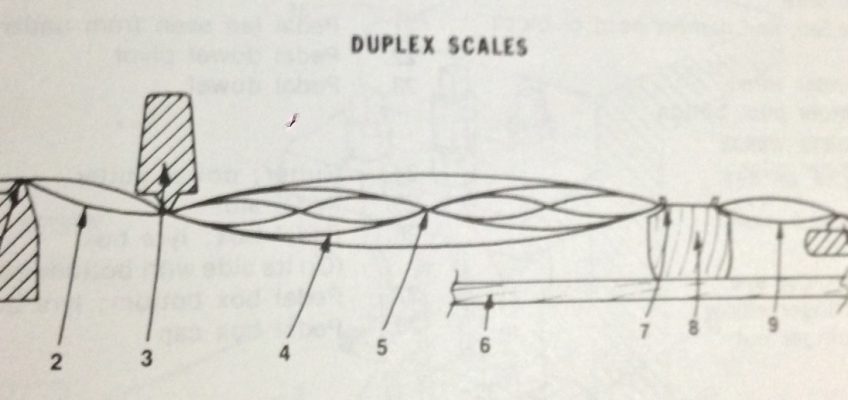Part Desciption:
-
Plate String with Front Bearing
-
Front Dupflex Scale
-
Capo d’astro bar
-
Anti-node; loop
-
Node
-
Soundboard
-
Bridge Pin
-
Bridge
-
Rear Dupflex Scale
-
Plate string with rear bearing; aliquot
-
Plate
-
Hitch Pin
Pianos including a duplex scale portion were first introduced to the piano industry in the latter half of the nineteenth century. The purpose of the duplex scale is to enhance the quality of piano tone by regulating segments of the so-called non-speaking portion of the piano strings so that the vibrations of such regulated segments are in harmony with the vibrations of the so-called speaking length of the strings.

Leave a Reply